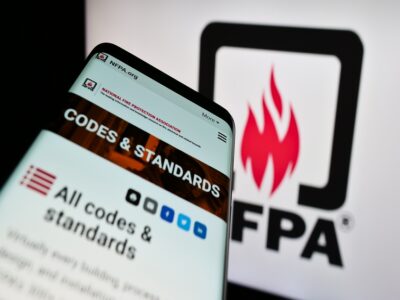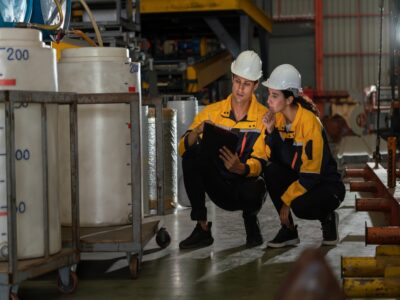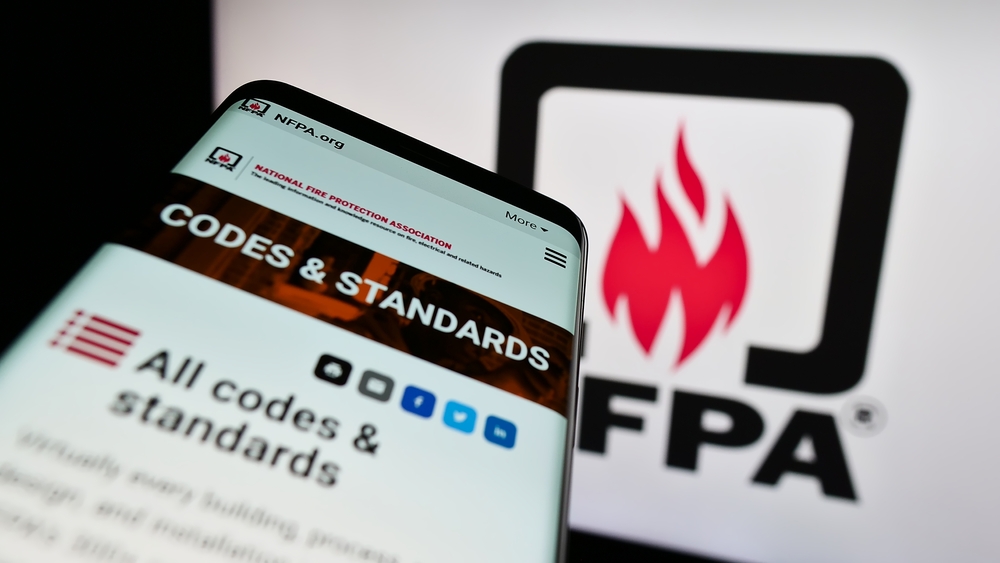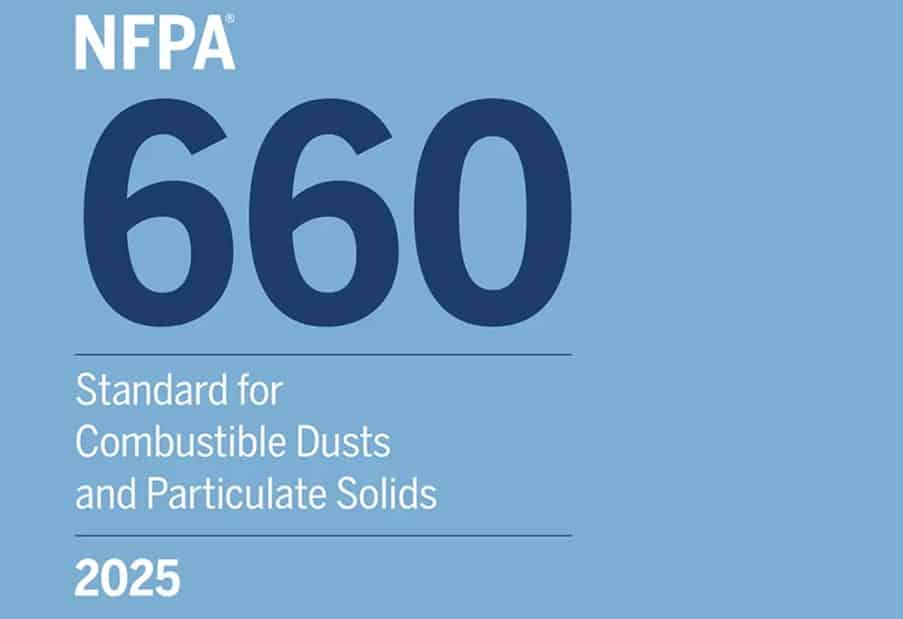Search
NFPA 660 Explained: Answering Your Questions About the New Combustible Dust Standard

As businesses begin to adopt NFPA 660: Standard for Combustible Dusts – the newly-consolidated standard – questions arise around what is new, what is old, and how to stay compliant.
To help engineers, facility personnel, and safety professionals navigate and manage this transition, we’ve put together answers to the most pressing questions regarding NFPA 660. If you’re new to combustible dust standards, are unsure about the difference between NFPA 652 and NFPA 660, or just want to learn more about how the change effects your existing practices, read on for more clarity and insight.
What is NFPA 660?
NFPA 660: Standard for Combustible Dusts and Particulate Solids is the new consolidated standard for combustible dust safety, created by the National Fire Protection Association (NFPA). It replaces and combines several previous standards (NFPA 652, NFPA 654, NFPA 484, NFPA 61, NFPA 655, and NFPA 664) into a single, unified framework.
NFPA 660 outlines how facilities should identify, assess, and control fire, flash fire, and explosion hazards associated with combustible dusts and powders. It is now the primary reference for dust-related process safety in North America.
At Stonehouse Process Safety, we help companies meet NFPA 660 requirements through laboratory testing, Dust Hazards Analysis (DHA), training, and additional process safety consulting services.
Why was NFPA 660 created?
NFPA 660 was developed to streamline combustible dust standards. Previously, facilities had to refer to multiple documents depending on the type of material (commodity) or industry. This had caused confusion and inconsistent application of safety measures.
NFPA 660 merges these into a single, easy-to-follow standard, while still allowing for industry-specific and commodity-specific guidance in dedicated chapters. This makes compliance clearer and helps protect workers, facilities, and operations more effectively.
What happened to NFPA 652?
NFPA 652: Standard on the Fundamentals of Combustible Dust laid the groundwork for dust safety. Its key elements — such as the Dust Hazards Analysis (DHA) requirement, combustible dust testing, and ignition source control — have been carried over into NFPA 660.
NFPA 652 is now being retired, along with other legacy industry- and commodity-specific NFPA standards and replaced by the comprehensive NFPA 660 standard. If your facility followed NFPA 652, you’re well on your way to NFPA 660 compliance — but a DHA revalidation would still be required at least every five years or when material/powder or plant changes/modifications are made.
Does NFPA 660 apply to my facility?
If your facility handles, processes, generates, or stores combustible particulate solid(s) (powder) and/or combustible dust(s), then yes — NFPA 660 likely applies to you.
Industries affected include:
- Chemical processing
- Agriculture
- Food and beverage manufacturing
- Pharmaceuticals
- Plastics and rubber
- Wood and forest products
- Pulp and paper
- Metal
Stonehouse Process Safety works across all these sectors, providing expert guidance, testing, and analysis tailored to each industry’s needs.
What is a Dust Hazards Analysis (DHA)? Is it required under NFPA 660?
Yes — Dust Hazard Analysis (DHA) is still required under NFPA 660. A DHA is a systematic evaluation of potential dust fire, flash fire, and explosion hazards in a process or facility and recommendation of measures for their management. It consists of:
- Identifying safe operating ranges
- Identifying existing safeguards to manage fire, flash fire, and explosion events
- Recommending additional safeguards where warranted, including a plan for implementation
A DHA is mandatory for all existing facilities handling combustible particulate solids and/or dusts and must be updated every 5 years or after significant changes to powders, processes or equipment.
Stonehouse Process Safety has carried out hundreds of DHAs across North America and globally, helping facilities ensure safety and compliance.
How do I know if my dust is combustible?
The only way to know for sure is to test it in a laboratory. NFPA 660 requires facilities to determine whether their powders are combustible or explosible.
Stonehouse Process Safety operates one of the largest ISO 17025-accredited combustible dust testing laboratories in North America. Our tests include:
- Go/No-Go Combustibility and Explosibility screening (NFPA 652 compliance)
- Kst and Pmax testing (20L Sphere Method)
- Minimum Ignition Energy (MIE)
- Minimum Ignition Temperature (MIT)
- Electrostatic sensitivity
- Thermal stability testing (Grewer Oven, Isothermal Basket, Bulk Powder, Air over Layer tests, etc.)
We provide fast turnaround, clear reporting, and expert interpretation.
What testing is required under NFPA 660?
NFPA 660 recommends a suite of tests depending on your dust type, process, and application.
These help assess:
- Fire and Explosion Potential
- Go/No-Go Combustibility (fire) and Explosibility (Explosion) Screening tests
- Explosion Severity
- 20L Sphere test – measures Kst (deflagration index) and Pmax (maximum pressure)
- Ignition Sensitivity
- Minimum Explosible Concentration
- Minimum Ignition Energy (MIE)
- Minimum Auto-Ignition Temperature – Dust Cloud (MIT-cloud)
- Hot Surface Layer Ignition Temperature (LIT)
- Electrostatic Sensitivity
- Volume Resistivity
- Charge Decay (Relaxation) Time
- Chargeability
- Discharge Energy
- Thermal Stability (various tests)
All of these are available through Stonehouse’s state-of-the-art testing laboratory.
How often do I need to update my DHA?
According to NFPA 660 (and previously NFPA 652), a Dust Hazards Analysis (DHA) must be:
- Completed for all existing processes
- Reviewed and updated at least every 5 years
- Revised after any major powder and/or process change
A current DHA is a cornerstone of compliance. Stonehouse can help you conduct new DHAs, update existing ones, or review facility and/or powder changes to keep you on track.
Who can help us comply with NFPA 660?
Stonehouse Process Safety is an expert consulting, testing laboratory, and training company focused exclusively on process safety and combustible dust hazards.
We offer:
- Dust combustibility, explosion, static electricity (electrostatic), self-heating (thermal instability) testing
- NFPA 660 compliance support
- Dust Hazard Analysis (DHA)
- Ignition source reviews
- Process safety audits
- Training and on-site consulting
- Global support and industry-leading experience
We work with manufacturers, powder processing companies, and all companies that need to handle combustible dusts across the U.S. and around the world.
How do I get started on complying with NFPA 660?
If you’re handling particulate solids (powders) and/or combustible dusts, NFPA 660 applies — and we can help.
Contact Stonehouse Process Safety to:
- Test your powders in our accredited laboratories
- Schedule a DHA or compliance review
- Get expert help with NFPA 660 compliance
- Protect your people, plant, and production

Get in touch
To learn more about our expertise and services in dust explosion prevention & mitigation, call us at +1 609 455 0001 or email us at [email protected] today.
We also offer tailored virtual and in-company process safety training programs on Dust Explosions, Static Electricity and HAC (Hazardous Area Classification) and more. Find further information here.










